 This is one that I LOVE already: The Comfort Box! The idea is to take any box with a lid (shoe box, file box, oatmeal box, etc.) and fill it with items that are comforting, set aside for times of stress, depression, anxiety, fears, and overwhelming emotions. One of the best parts is that the box can be as plain or as decorated as desired, not requiring any level of craftiness or artistic ability, but decorating it can be just as therapeutic as the items inside. For mine, I chose a simple file box from Walmart and covered it in soft, snuggle-fabric that was seventy-percent off on President’s Day.
This is one that I LOVE already: The Comfort Box! The idea is to take any box with a lid (shoe box, file box, oatmeal box, etc.) and fill it with items that are comforting, set aside for times of stress, depression, anxiety, fears, and overwhelming emotions. One of the best parts is that the box can be as plain or as decorated as desired, not requiring any level of craftiness or artistic ability, but decorating it can be just as therapeutic as the items inside. For mine, I chose a simple file box from Walmart and covered it in soft, snuggle-fabric that was seventy-percent off on President’s Day.
Through this exercise, I learned that the things that comfort me are the ones that remind me that I am loved. Just for example, here are the things that are located inside my box for the difficult moments:
- Small teddy bear- bought on sale after Valentine’s day because it helps me to have something to hold
- Red scarf sprayed with hubby’s cologne- reminds me of our dating/courting days in college
- Five small $1 candles from Walmart for sensory/mindfulness

-
- Baked Apple Pie/Hazelnut- Both calming scents that I love
- Mandarin Sunset- Sweet, and uplifting
- Honeysuckle- Takes me back to my home growing up
- Lime-Coconut- Takes me back to the strange candle my dad bought for me during college that made me feel cared for during one of the hardest times in my life
-
- Chocolates- Three different kinds because a girl needs her chocolate and my mood determines what type I need at the time.
- Pictures of Hubby and me while we were dating
- Cards- two from my husband from when we were dating, two from people who have been encouragements to me along the way
- Pictures with specific verses- While much of Scripture triggers me, there are a few verses that were helps through the trauma and after the trauma at different times
- Poem from “She Rises”- to help in the times when I do not see the point in trying
- Lotion from Bath and Body Works- sensory/mindfulness/calming
- Blanket (blue and black, plush)- For comfort in the hard times, a place to hide, and maybe a way to snuggle when my husband is with me because he has been my rock through so many trials
- Roses (fake, one blue, one pink)- Takes me back to growing up with my mom and romantic gifts from my husband
Now, if my husband made a comfort box, I imagine it would likely be filled with comic books (DC and Marvel), Super Mario figures, cans of Mountain Dew, and video games, but to each their own. When I was looking at going into surgery last week, preparing for the possibility of a repeat mental health crises following the procedure, I was able to take some time to myself, open the box and remember that I am not alone, and that there is a reason to keep fighting. Today, after another anxiety attack during church, this box is a reminder that there are, in fact, good times and my home is a safe place despite the chaos. It is a designated place to find comfort in times of anxiety and distress, times of triggers or reminders, or when depression seems to take over and hope is waning fast. And it is made specifically to meet MY needs at the time, not a generic one-size-fits-all sort of prescription for the pain.
*For more art therapy ideas from Managing Traumatic Stress through Art, check out the full list of exercises from the blog post: “Managing Traumatic Stress Through Art.”
********
Shop at our Amazon store! As an Amazon Influencer, this website earns from qualifying purchases.
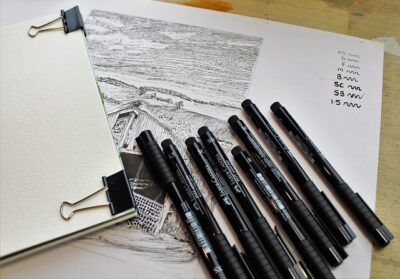
 Who do you reach out to when the blessings come or when life takes a turn for the worse? Who do you celebrate with when you get a promotion, a new house, new car, or a baby on the way, furry or otherwise? Who mourns with you and gives guidance when you are laid off from work, the house catches fire, the vehicle is totaled, or a family member is at death’s door? Too bad we cannot really call the
Who do you reach out to when the blessings come or when life takes a turn for the worse? Who do you celebrate with when you get a promotion, a new house, new car, or a baby on the way, furry or otherwise? Who mourns with you and gives guidance when you are laid off from work, the house catches fire, the vehicle is totaled, or a family member is at death’s door? Too bad we cannot really call the 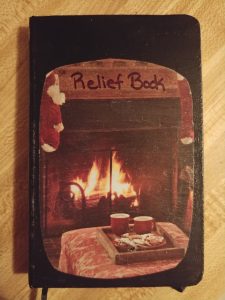 Does the trauma ever cause you to shut-down to the point of indifference and apathy, merely attempting to survive through the day only to repeat the next day? Are there hobbies or activities that you enjoy, things that pique your interest and curiosity, or is there no time, no energy, and no desire to even try? Yep, that’s me. Many times over and more days than I can count like that over the last decade. Because of trauma, people sometimes close themselves off for the sake of survival, in turn creating a situation where they do not experience the many sensory aspects of life.
Does the trauma ever cause you to shut-down to the point of indifference and apathy, merely attempting to survive through the day only to repeat the next day? Are there hobbies or activities that you enjoy, things that pique your interest and curiosity, or is there no time, no energy, and no desire to even try? Yep, that’s me. Many times over and more days than I can count like that over the last decade. Because of trauma, people sometimes close themselves off for the sake of survival, in turn creating a situation where they do not experience the many sensory aspects of life. hip cookies with a crispy outsides and soft, tender insides, and rib eye steaks seared and seasoned to perfection with savory sides. I found pictures of furry kittens with massive eyes and little twitching ears, and long-haired dogs to imagine snuggling with and running through their long coats, smelling that all-too familiar dog smell and of course that not-so-pleasant dog-breath, something that somehow brought comfort in the known.
hip cookies with a crispy outsides and soft, tender insides, and rib eye steaks seared and seasoned to perfection with savory sides. I found pictures of furry kittens with massive eyes and little twitching ears, and long-haired dogs to imagine snuggling with and running through their long coats, smelling that all-too familiar dog smell and of course that not-so-pleasant dog-breath, something that somehow brought comfort in the known.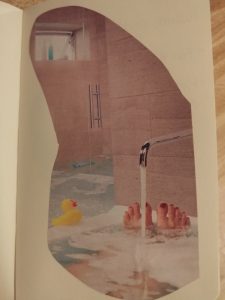 ed, and reacquaint oneself with feeling, seeing, hearing, touch and taste. It reawakens the senses that have not had a variety of stimulation recently due to the depression or anxiety. One of my favorites in this book ended up being in a nice, warm bath. I could feel the warm water around me, touch and see the bubbles floating. I could hear birds chirping outside the small window, singing in my own little haven. I could smell the body wash as it gingerly filled the air, reminiscent of the flowers blooming outside. I had no idea how to get back in touch with the things I was missing and longing for until I was able to create a book, just for me, that had a plethora of the things that I enjoyed.
ed, and reacquaint oneself with feeling, seeing, hearing, touch and taste. It reawakens the senses that have not had a variety of stimulation recently due to the depression or anxiety. One of my favorites in this book ended up being in a nice, warm bath. I could feel the warm water around me, touch and see the bubbles floating. I could hear birds chirping outside the small window, singing in my own little haven. I could smell the body wash as it gingerly filled the air, reminiscent of the flowers blooming outside. I had no idea how to get back in touch with the things I was missing and longing for until I was able to create a book, just for me, that had a plethora of the things that I enjoyed.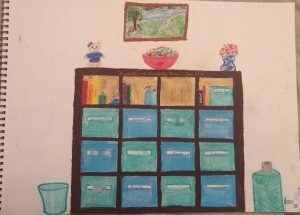 While walking in to Walmart, excited about
While walking in to Walmart, excited about 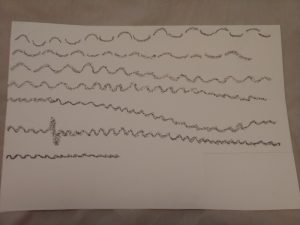 How does your breathing change in a moment of crisis? Does it become fast and shallow? Is it difficult or painful? Do you hold it in as if it is the last bit of air to ever pass through your lungs? First tightening into a knot, my chest shifts to rapid, shallow breaths, leaving little room for oxygen to pass in or out. This exercise is an opportunity to evaluate changes in the patterns of depth and duration of breaths through mindfulness techniques. After experimenting with various strokes and lines/squiggles, a wave pattern felt most natural and comfortable to me, though awkward at first. Closing my eyes made it easier to focus on my breath, getting evermore shallow as the five minutes seemed to go on for ten. Upon opening my eyes, I saw on paper the result of heading towards an anxiety attack and my inhalations increasing in number, but decreasing in duration. While this exercise shows that not every tool works efficiently for every person, the second part of this gave me the key to working on mindfulness through breathing.
How does your breathing change in a moment of crisis? Does it become fast and shallow? Is it difficult or painful? Do you hold it in as if it is the last bit of air to ever pass through your lungs? First tightening into a knot, my chest shifts to rapid, shallow breaths, leaving little room for oxygen to pass in or out. This exercise is an opportunity to evaluate changes in the patterns of depth and duration of breaths through mindfulness techniques. After experimenting with various strokes and lines/squiggles, a wave pattern felt most natural and comfortable to me, though awkward at first. Closing my eyes made it easier to focus on my breath, getting evermore shallow as the five minutes seemed to go on for ten. Upon opening my eyes, I saw on paper the result of heading towards an anxiety attack and my inhalations increasing in number, but decreasing in duration. While this exercise shows that not every tool works efficiently for every person, the second part of this gave me the key to working on mindfulness through breathing.
